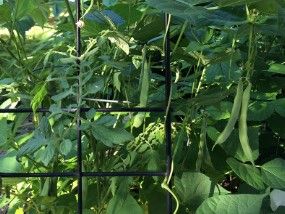By Adityarup Rup Chakravorty
Pinto beans are good for us. They are nutritious, packed with protein and fiber. They also contain a host of micronutrients like B vitamins and folate.
But being good isn’t enough for pinto beans. They also need to look good.
Typically, pinto beans have a striking mottled pattern of dark and light brown. However, the beans can darken after harvesting.
Consumers perceive pinto beans with darker colors to be older, harder to cook, and less nutritious than lighter beans.
“We eat with our eyes,” says Juan Osorno. Osorno is a researcher at North Dakota State University.
And it’s not only consumers who are skeptical about dark pinto beans. “Farmers see darker pinto bean seeds as being of poorer quality,” says Osorno. “And when farmers try to sell darker beans, they often have to accept discounted prices.”
That’s a big deal because pinto beans are the most common type of dry bean grown and consumed in the United States.
In the recent study, Osorno and colleagues describe the process of developing a promising new variety of slow-darkening pinto bean. “The study found no major differences in the agronomic performance of regular versus the slow-darkening pintos,” says Osorno.
